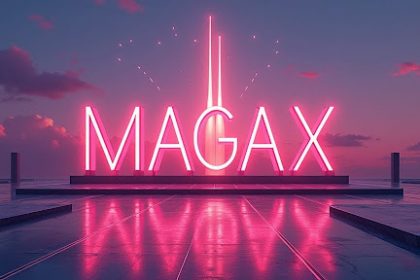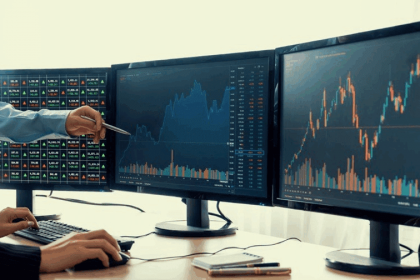In today’s dynamic commercial environment, safeguarding a business extends far beyond simply locking doors at the end of the day. The complexities of protecting vital assets, sensitive data, and, most importantly, human capital, have escalated dramatically. Modern threats are increasingly sophisticated, ranging from organized theft to cyber-physical intrusions, demanding a paradigm shift from reactive measures to integrated, intelligent security solutions.
The proactive deployment of advanced security technologies is no longer an optional luxury but a fundamental pillar of business continuity and resilience. It’s about creating a robust shield that mitigates risks and fosters an environment where innovation and productivity can thrive unhindered. This forward-thinking approach ensures that businesses are not merely responding to incidents but are actively preventing them, thereby securing their operational integrity and future growth.
Beyond the Basics: Understanding Comprehensive Commercial Security
True commercial security transcends the simplistic notion of basic locks and an audible alarm; it embodies a sophisticated, layered defense strategy. This approach begins with a meticulous assessment of potential vulnerabilities unique to a business’s operations, physical layout, and industry-specific risks. Rather than piecemeal installations, a comprehensive system integrates various technologies to create a synergistic protective framework. This includes everything from the perimeter to internal critical zones, considering both external threats and internal protocol adherence.
The goal is to establish multiple fail-safes and redundancy, ensuring that no single point of failure compromises the entire system. Furthermore, effective security must be inherently scalable, capable of expanding and adapting as a business grows or as the threat landscape evolves. Partnering with security system design consultants is crucial for businesses looking to implement truly comprehensive and effective security strategies that address specific vulnerabilities with a tailored, future-proof approach, ensuring every aspect of protection is considered.
Intelligent Surveillance: The Power of Advanced Camera Systems
The contemporary camera system is a far cry from the grainy, fixed-position surveillance of yesteryear. Today’s intelligent surveillance, particularly through advanced CCTV and IP cameras, forms the vigilant eyes of modern business security. These systems now boast capabilities such as ultra-high-resolution imaging, delivering crystal-clear visuals that are invaluable for identification and evidence. Specialized options like thermal cameras can detect anomalies even in complete darkness, while integrated analytics transform raw video into actionable intelligence. Features like facial recognition can identify authorized personnel or flag suspicious individuals, while object detection can alert to unusual activity or unattended items.
| Main Advantages of Modern Surveillance Systems | |
| High-Resolution Imaging | Delivers crystal-clear visuals crucial for identification and evidence gathering. |
| Advanced Analytics | Enables features like facial recognition and object detection, turning raw video into actionable intelligence. |
| Remote Monitoring & Cloud Storage | Allows for real-time oversight from any location and secure, easy access to historical footage. |
| Specialized Capabilities | Includes options like thermal cameras for effective detection in all lighting conditions, including complete darkness. |
| Operational Insights | Extends utility beyond security to improve business processes, such as managing customer flow and enhancing efficiency. |
Beyond mere deterrence, these systems are pivotal for real-time remote monitoring, allowing oversight from anywhere and utilizing secure cloud-based storage for easy access to historical footage. Robust commercial security systems are anchored by intelligent surveillance, providing critical visual data for real-time monitoring and post-incident analysis, extending their utility beyond security to areas like operational efficiency and customer flow management, thereby offering multifaceted value to businesses.
Controlling Access: The Sophistication of Modern Entry Systems
The evolution of access control has moved decisively beyond the limitations and inherent vulnerabilities of traditional physical keys. Modern entry systems offer businesses unprecedented control over who enters their premises, when, and where. Instead of a single key granting universal access, sophisticated solutions utilize a range of credentials, from proximity cards and smart cards to biometric scanners reading fingerprints, irises, or even facial structures. Mobile credentials, leveraging smartphone technology, also provide a convenient and secure option. The fundamental benefit lies in granular control: businesses can precisely define access privileges for individuals or groups, instantly revoke access without changing locks, and generate comprehensive audit trails of every entry and exit.
This level of oversight is crucial for managing personnel flow, securing sensitive areas, and investigating incidents. A meticulous access control system design is vital for managing personnel flow, protecting sensitive areas, and maintaining detailed records of entry and exit, forming a critical layer of an integrated security strategy that enhances both safety and operational efficiency.
Intrusion Detection and Alarms: Proactive Threat Response
At the core of any vigilant security posture is an advanced intrusion detection system, designed to identify unauthorized entry and immediately trigger an appropriate response. These systems employ a variety of sensors, strategically placed to detect any breach.
Motion sensors detect movement within secured areas, glass break sensors register the sound or vibration of shattering windows, and door/window contacts signal when an opening is forced. When an alarm is triggered, these systems are typically connected to a central monitoring station, ensuring immediate notification to security personnel or emergency services. Beyond simple intrusion, modern systems often integrate environmental sensors, detecting threats like fire, smoke, carbon monoxide leaks, or flooding, providing a holistic safety net.
Emphasis is placed on minimizing false alarms through intelligent sensor placement and verification protocols, ensuring that real threats receive rapid and decisive intervention. These advanced commercial security systems utilize sophisticated intrusion detection to provide immediate alerts and initiate rapid response protocols, minimizing potential damage or loss, thereby safeguarding assets and personnel effectively around the clock.
Integrated Security Solutions: The Synergistic Approach
The true power of modern business security emerges when individual components cease to operate in isolation and instead become part of a fully integrated, synergistic platform. This seamless communication between diverse security technologies transforms a collection of devices into a cohesive, intelligent network. Imagine an access control system that, upon detecting an unauthorized attempt, automatically triggers nearby cameras to begin recording at a higher resolution, simultaneously locking down sensitive areas, and alerting security personnel with real-time video feeds.
Analysis: The Value of System Integration
To understand the impact of this shift, consider the functional differences between isolated and integrated security models:
- Event Response: In an isolated model, a security guard might receive an access denial alert on one screen and then have to manually find the corresponding camera on another system to assess the situation. This process is slow and prone to human error. In an integrated model, the access event is the trigger. The system automatically correlates the event with the relevant cameras, locks, and alarms, presenting a complete, actionable intelligence package to the operator instantly.
- Data Correlation: After an incident, an isolated system requires investigators to manually piece together data from separate logs—access records from one database, video footage from another. An integrated platform automatically links all associated data to a single event, creating a unified timeline that dramatically simplifies and accelerates forensic analysis.
- Operational Efficiency: Managing multiple, disconnected systems requires extensive training and constant attention to different interfaces. A centralized, integrated system provides a single pane of glass—a unified dashboard—for monitoring and control. This streamlines workflows, reduces the cognitive load on security staff, and minimizes the potential for missed events.
This level of automated response and enhanced situational awareness is the hallmark of an integrated system. Centralized management dashboards provide a single point of control for all security functions, streamlining operations and improving response times. Developing such comprehensive solutions often begins with expert security system design consultants who specialize in unifying disparate technologies into a cohesive and powerful whole, ensuring that every element works in concert to provide maximum protection and efficiency, creating a truly formidable defense for any business.
Conclusion
As businesses navigate an increasingly complex world, the landscape of security continues its rapid evolution. The future promises even more sophisticated solutions, driven by advancements in artificial intelligence and machine learning, which will enable predictive analytics to identify potential threats before they materialize. We’ll see a continued rise in cloud-based security platforms, offering unparalleled scalability and remote management capabilities.
The integration of the Internet of Things (IoT) will further weave security into the very fabric of business operations, creating a more interconnected and responsive defense. For any organization, maintaining a proactive and adaptive security posture will be paramount to safeguarding assets and ensuring continuity in an ever-changing environment.








